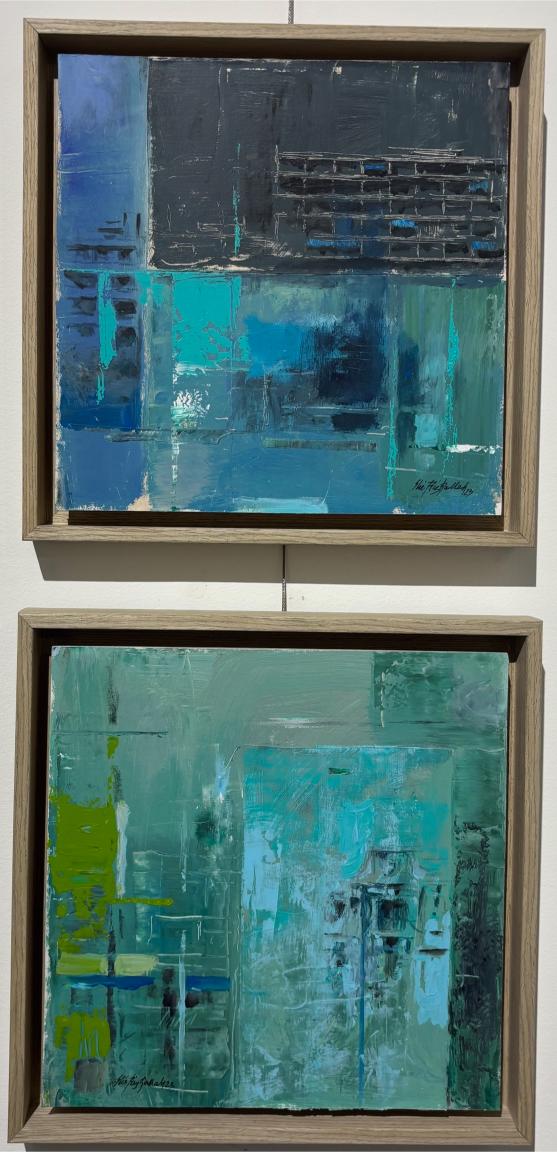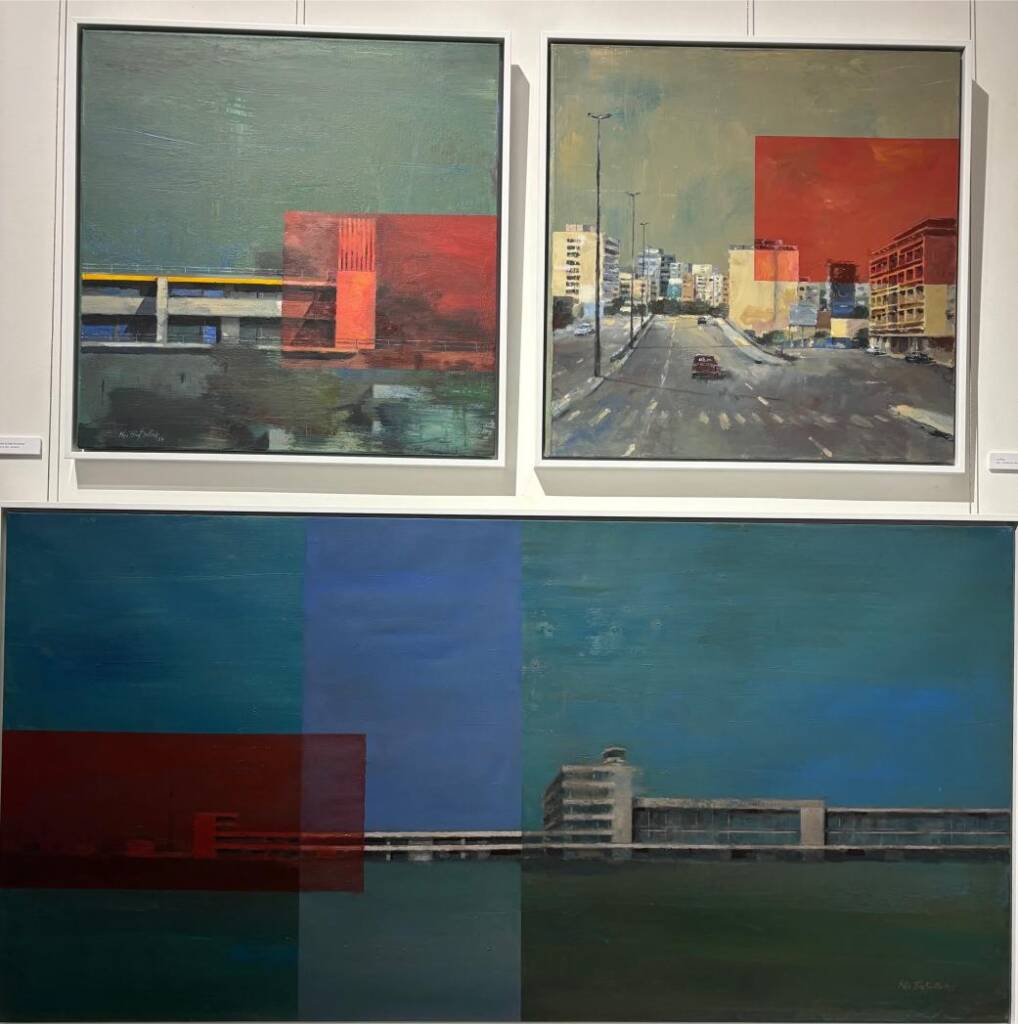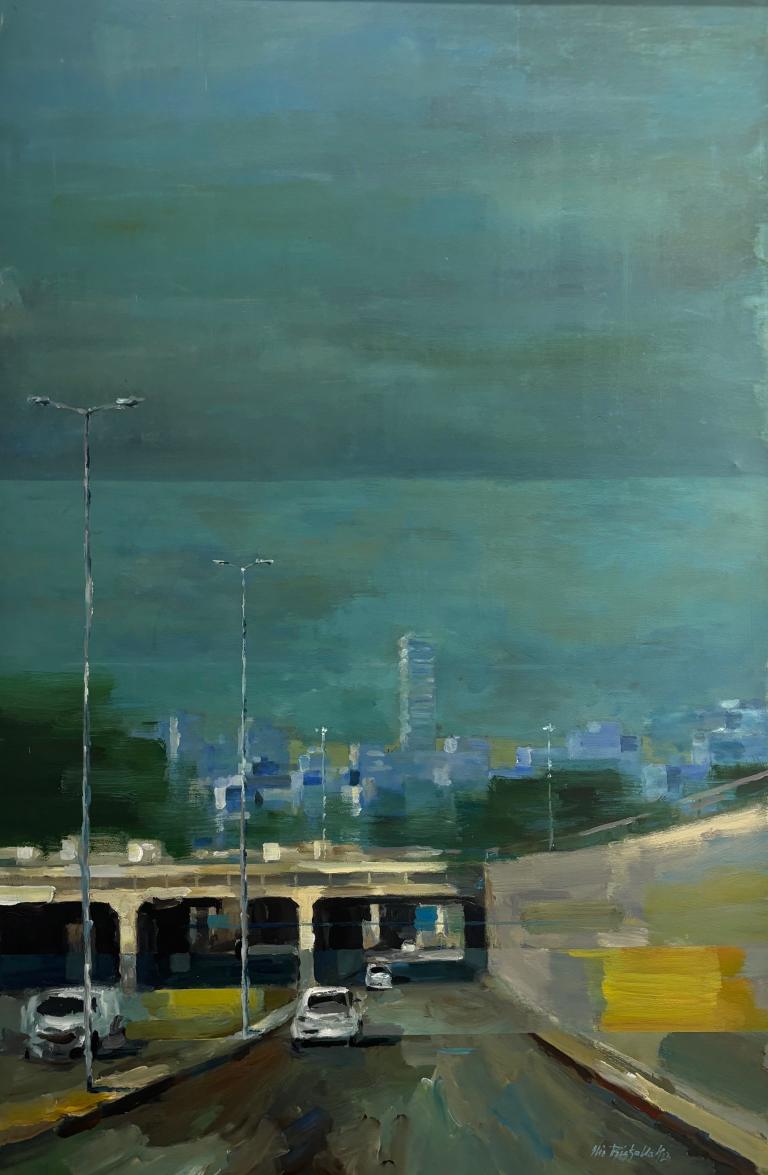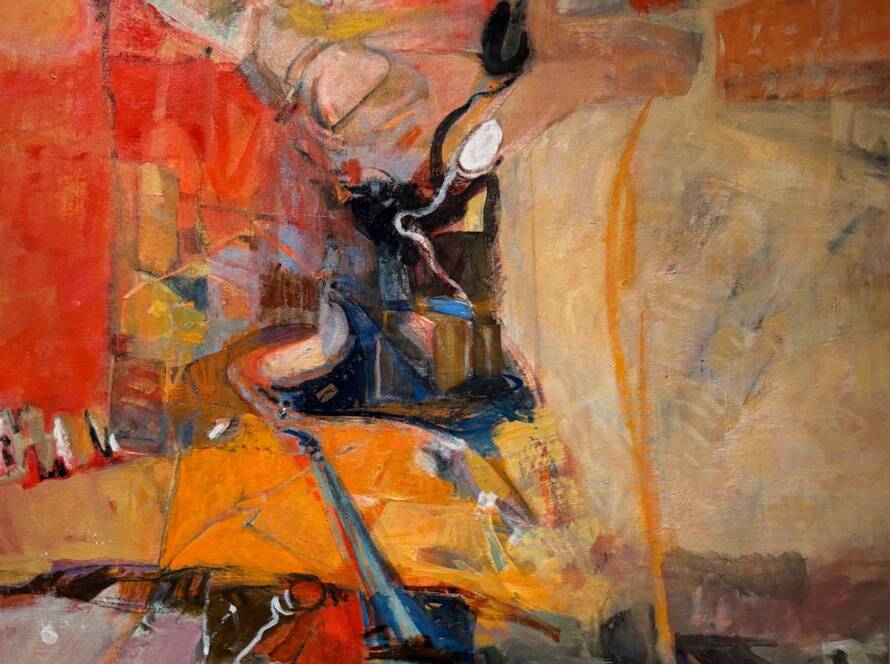An Article by A. V. (588 words, 3 min. read)
A Tribute to Vanishing Spaces
At Mission Art Gallery in Mar Mikhael, a world of fragmented memories unfolded during the month of March, through the works of Elie Rizkallah. His exhibition, Reminiscence, was not just an artistic showcase but a poetic reconstruction of an era slipping into obscurity. Through his pieces, the artist transported viewers to the Beirut of the 1960s, a city shaped by modernist architecture and vibrant urban life. Those elements that are now fading, erased by time and transformation.
Each artwork carried echoes of spaces once filled with life, now replaced by abstraction and reinterpretation. The exhibition did not simply depict buildings; it reimagined them, offering a new way to engage with history. Rizkallah’s vision was one of remembrance; not through nostalgia, but through reinvention, giving forgotten structures a place within contemporary artistic expression.

Fragments of a City, Reassembled
Walking through the exhibition was like stepping into a city that existed between past and present, reality and imagination. Rizkallah’s work is a dialogue between what remains and what disappeared, where buildings are no longer just physical structures but symbols of collective memory. His Espace Fragmenté series captured architectural details in pieces, scattered like remnants of an unfinished puzzle, inviting viewers to reconstruct their own version of the past.
His technique blends abstraction with representation, shifting between sharp geometric forms and fluid, dreamlike compositions. There is a sense of movement in his collages, as if time itself captured mid-transition—between construction and decay, presence and absence.
The Colors of Memory
Though the subject matter reflected loss, the exhibition was far from somber. Rizkallah chose to infuse his pieces with bold, striking colors—deep blues, warm oranges, and intense reds—transforming decayed spaces into something vivid and alive. These colors did not simply decorate; they reimagined, elevating ruins into artistic landmarks that carried both melancholy and hope.
By rejecting the expected grayscale tones of history, he turned destruction into a dreamscape, an alternative way of remembering. His work did not lament what was lost; it celebrated what still lingers in the mind, reinterpreted in new and unexpected ways.

An Artistic and Personal Journey
Though Rizkallah is now based in Paris, his connection to Beirut remained central to this exhibition. The city’s streets, its changing landscapes, and its fading landmarks continued to inspire him, shaping his artistic exploration of place and memory. His journey between Lebanon and France gave him a dual perspective; one of an observer returning to a familiar but evolving space, capturing what others might overlook.
Beyond architecture, Reminiscence was a meditation on resilience. Amid Lebanon’s ongoing challenges, Rizkallah’s work highlighted the role of art in preserving culture, even when physical spaces are lost. His tribute to the architects of Lebanon’s golden age was also a tribute to the creative spirit that persists despite adversity.

A Reflection on Art’s Role in Time
Through Reminiscence, Rizkallah offered more than an exhibition, he opened a space for reflection. His work reminded viewers that architecture is more than brick and stone; it carries the weight of memory, identity, and shared history. When cities change, traces remain, whether in the lines of a forgotten blueprint or in the brushstrokes of an artist who refuses to let them fade.
By transforming loss into art, he gave these spaces a new kind of permanence; one that exists not in the streets of Beirut, but in the minds of those who stood before his works, witnessing the past through his vision


